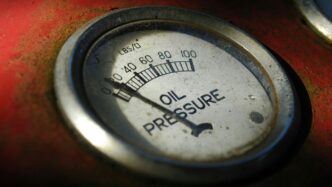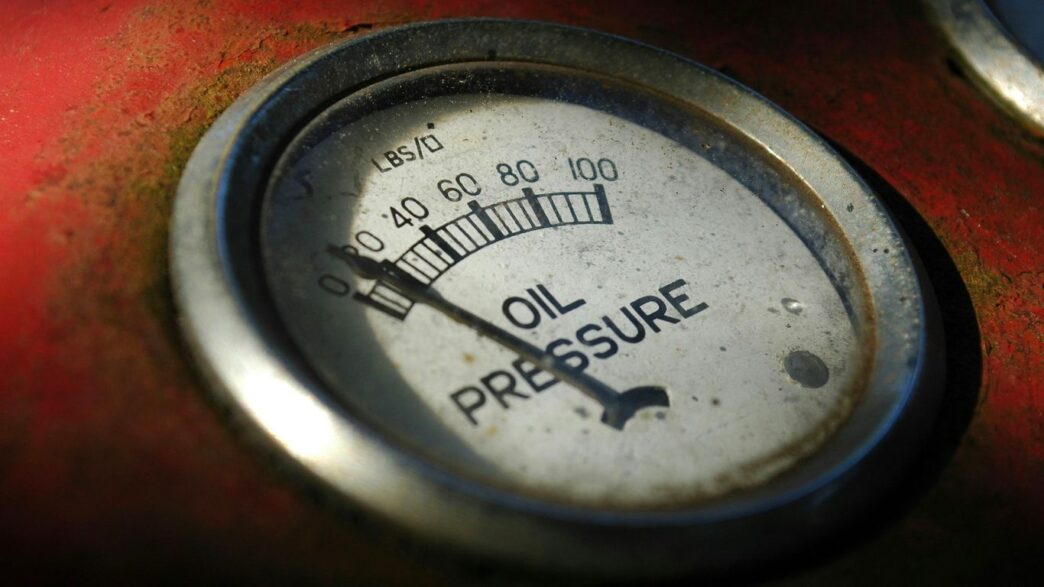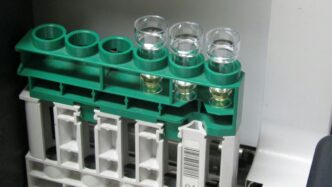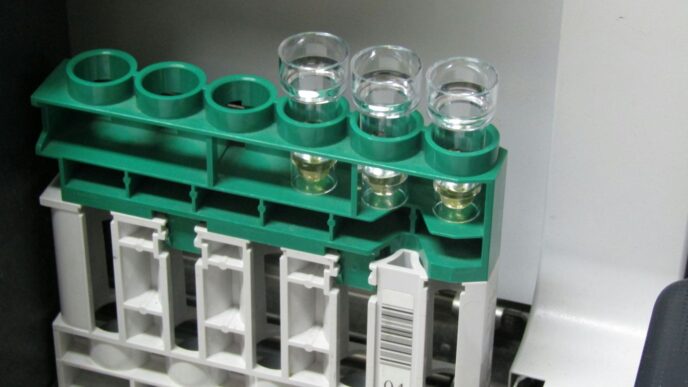Ever wondered what keeps your body’s fluids in check or how water filters work? It all comes down to pressure, but not just one kind. We’re talking about hydrostatic pressure and osmotic pressure. They sound similar, and they both deal with fluids, but they’re actually quite different. Let’s break down what makes them tick and why understanding osmotic pressure vs hydrostatic pressure matters in everything from our own bodies to big engineering projects.
Key Takeaways
- Hydrostatic pressure comes from the weight of a fluid due to gravity, and it increases with depth. Think of the deeper you swim, the more pressure you feel.
- Osmotic pressure is all about concentration differences across a special barrier, called a semipermeable membrane. It’s what drives water movement to balance things out.
- The main difference is the cause: gravity for hydrostatic, and solute concentration for osmotic. This leads to different ways they act.
- In our bodies, hydrostatic pressure helps blood flow, while osmotic pressure keeps cells from getting too big or too small. They work together for fluid balance.
- Both pressures have real-world uses, from designing medical gear like dialysis machines (osmotic) to building dams (hydrostatic) and creating clean water through reverse osmosis.
Defining Hydrostatic and Osmotic Pressure
Alright, let’s get down to the nitty-gritty of what hydrostatic and osmotic pressure actually are. It’s easy to get them mixed up, but they’re driven by totally different things and have pretty distinct effects, especially when we’re talking about fluids and how they behave. Think of it like this: one is about the weight of water sitting still, and the other is about how water moves because of what’s dissolved in it.
The Nature of Hydrostatic Pressure
So, hydrostatic pressure. Basically, it’s the pressure a fluid exerts when it’s just sitting there, not moving. Imagine a big tank of water. The water at the bottom has to hold up all the water above it, right? That’s hydrostatic pressure. The deeper you go in a fluid, the more hydrostatic pressure you’ll feel. It’s all thanks to gravity pulling everything down. This is why your ears might pop when you go deep in a swimming pool, or why a dam needs to be built really strong at the base. It’s a pretty straightforward concept, really. The formula for it is pretty simple too: P = ρgh. That just means pressure (P) equals the density of the fluid (ρ), times gravity (g), times the height of the fluid column (h). Easy peasy.
The Essence of Osmotic Pressure
Now, osmotic pressure is a bit different. It’s all about semipermeable membranes – those are like selective gates that let some things through but not others. Imagine you have pure water on one side of this gate and salty water on the other. Water molecules, being small, will naturally want to move from the pure water side to the salty side. Why? To try and even out the saltiness, or solute concentration, on both sides. Osmotic pressure is the push you’d need to apply to the salty side to stop that water from moving over. It’s a measure of the tendency of water to move across that membrane. This is super important in biology, like keeping your cells from bursting or shriveling up.
Fundamental Differences in Origin
When you boil it down, the main difference is where the pressure comes from. Hydrostatic pressure is all about gravity and the weight of the fluid itself. It’s a physical force due to mass. Osmotic pressure, on the other hand, is a chemical phenomenon. It arises from differences in solute concentration across a membrane, driving the movement of solvent (usually water) to achieve equilibrium. So, you’ve got:
- Hydrostatic Pressure: Caused by the weight of a fluid due to gravity.
- Osmotic Pressure: Driven by differences in solute concentration across a semipermeable membrane.
It’s like comparing the pressure of a stack of books (hydrostatic) to the pressure created when you try to mix two liquids that don’t really want to mix without some effort (osmotic).
| Pressure Type | Primary Cause |
|---|---|
| Hydrostatic Pressure | Weight of fluid due to gravity |
| Osmotic Pressure | Solute concentration difference across a membrane |
Mechanisms and Driving Forces
So, how do these pressures actually get going? It’s not magic, it’s physics and chemistry at work. Let’s break down what makes hydrostatic and osmotic pressure tick.
Gravity’s Role in Hydrostatic Pressure
Hydrostatic pressure is pretty straightforward. Think about a swimming pool. The deeper you go, the more you feel the water pushing on you, right? That’s hydrostatic pressure. It’s basically the weight of the fluid itself, pressing down because of gravity. The taller the column of fluid, the more weight there is, and the higher the pressure at the bottom. This is why deep-sea divers have to worry about pressure – there’s a whole lot of water stacked up above them!
- It’s all about the fluid’s weight. The denser the fluid, the more it weighs, and the more hydrostatic pressure it creates.
- Depth matters. Pressure increases the further down you go.
- It acts in all directions. The fluid pushes equally on all sides of an object submerged in it.
Concentration Gradients as Osmotic Drivers
Osmotic pressure is a bit different. It doesn’t care about gravity. Instead, it’s all about how much
Biological Significance and Cellular Impact
When we talk about how our bodies and cells work, hydrostatic and osmotic pressure are actually pretty important. They’re not just abstract physics concepts; they’re constantly at play, keeping things running smoothly.
Hydrostatic Pressure in Bodily Fluids
Think about your blood. The force of your blood pushing against the walls of your blood vessels? That’s hydrostatic pressure in action. It’s largely driven by your heart pumping blood around, but gravity also plays a part, especially when you stand up. This pressure is what helps push fluid out of tiny blood vessels (capillaries) into the surrounding tissues, delivering nutrients and oxygen where they’re needed. It’s also what helps push fluid back into the vessels in other areas, like your kidneys, to be filtered.
- Blood Pressure: This is the most common example. It’s measured as systolic (when your heart beats) and diastolic (when your heart rests between beats).
- Fluid Movement: It helps move fluid from blood into tissues and then back again.
- Kidney Function: Essential for filtering waste products from the blood.
Osmotic Pressure’s Role in Cell Integrity
Now, let’s talk about cells. Cells are like tiny bags filled with stuff. The concentration of dissolved substances (like salts and sugars) inside the cell is different from the concentration outside. This difference creates osmotic pressure. Osmotic pressure is the force that draws water across the cell membrane to try and even out these concentrations. If a cell is in a solution with a lower solute concentration than its inside (hypotonic), water will rush in, and the cell might swell and even burst. If it’s in a solution with a higher solute concentration (hypertonic), water will leave the cell, causing it to shrink. This is why IV fluids have to be carefully balanced – you don’t want to mess with your body’s cells!
Here’s a quick look at what happens in different solutions:
| Solution Type | Solute Concentration | Water Movement | Cell Appearance |
|---|---|---|---|
| Isotonic | Equal to cell | Minimal | Normal |
| Hypotonic | Lower than cell | Into cell | Swells, may burst |
| Hypertonic | Higher than cell | Out of cell | Shrinks |
Fluid Balance Across Biological Membranes
Both hydrostatic and osmotic pressures work together to manage fluid balance throughout your body, especially across those semipermeable membranes like cell walls and the lining of blood vessels. In your kidneys, for instance, hydrostatic pressure pushes fluid and small molecules out of the blood into the kidney tubules, while osmotic pressure helps to pull water and some solutes back into the blood from the tubules. It’s a delicate dance. This constant push and pull is what allows your body to maintain the right amount of fluid in all the right places, keeping everything from your blood volume to your tissue hydration in check. Without this balance, things can go wrong pretty quickly, affecting everything from organ function to overall health.
Mathematical Representation and Calculation

So, how do we actually put numbers to these pressures? It’s not just about feeling the push or pull; there are formulas that help us quantify hydrostatic and osmotic pressure. This is where things get a bit more precise, and honestly, pretty interesting.
Calculating Hydrostatic Pressure
Hydrostatic pressure is pretty straightforward to calculate, especially when you think about a fluid at rest. The main idea is that the deeper you go, the more the fluid above pushes down. Gravity is the big player here.
- The basic formula is: P = ρgh
- ‘P’ is the hydrostatic pressure.
- ‘ρ’ (rho) is the density of the fluid. Think of it as how much
Real-World Applications and Engineering
So, we’ve talked about what hydrostatic and osmotic pressure are, and how they work in general. But where do we actually see these forces at play in the real world, especially when it comes to building things or designing systems? It turns out, understanding these pressures is pretty important for a lot of different jobs.
Medical Device Design Considerations
When doctors and engineers create medical equipment, they really need to think about both kinds of pressure. Take dialysis machines, for instance. They use osmotic pressure to pull waste products out of the blood. It’s like a selective filter, where the difference in concentration across a membrane helps move things around. Then there’s managing fluid buildup in the body, like with swelling (edema). Doctors have to consider how both hydrostatic pressure (the pressure from the fluid itself) and osmotic pressure (the pull from dissolved substances) are affecting where that fluid goes. It’s a delicate balance.
Water Purification Technologies
This is a big one, especially with clean water becoming more of a concern globally. Reverse osmosis (RO) systems, which are used to purify water, rely heavily on osmotic pressure. Basically, they apply a lot of hydrostatic pressure to push water through a special membrane. This membrane lets water molecules pass but blocks out salts, minerals, and other impurities. The whole process works because the applied pressure has to overcome the natural osmotic pressure that would otherwise draw water into the saltier side. It’s a clever way to get clean drinking water from sources like seawater.
Civil and Mechanical Engineering Needs
In civil engineering, hydrostatic pressure is a constant consideration. Think about building dams. Engineers need to calculate the immense hydrostatic pressure the water will exert on the dam’s structure. Getting this wrong could be disastrous. They also use these calculations for designing tunnels, pipelines, and even tall buildings where the weight of the structure itself creates pressure. For mechanical engineers, hydrostatic pressure is key when designing systems that move fluids, like pumps and pipes. They need to make sure the materials can handle the pressure without failing. Even something as simple as a car’s hydraulic brake system relies on understanding how pressure is transmitted through a fluid.
Distinguishing Between Pressure Types
So, we’ve talked about hydrostatic and osmotic pressure separately, but how do we really tell them apart when we see them in action? It’s not just about knowing the definitions; it’s about spotting the differences in how they start and what they do.
Cause Versus Effect in Fluid Dynamics
Think of it this way: hydrostatic pressure is all about gravity and the weight of a fluid. If you’re deep in a swimming pool, the pressure you feel pushing on you is hydrostatic. It’s the fluid itself, just sitting there, pushing down because of gravity. The deeper you go, the more fluid is above you, and the more pressure there is. It’s a pretty straightforward cause and effect – gravity acts on the fluid, and the fluid exerts pressure.
Osmotic pressure, though, is a bit different. It’s not about weight or gravity. It’s all about concentration. Imagine you have two solutions separated by a special barrier, like a screen door that only lets water through, not the dissolved stuff. If one side has more dissolved stuff (like salt or sugar) than the other, water will naturally want to move to the side with more stuff to try and even things out. Osmotic pressure is the force needed to stop that water movement. It’s driven by the difference in concentration, not by gravity.
Membrane Interactions and Pressure
This is where things get really interesting, especially in biology. Hydrostatic pressure can push fluids around, like blood being pumped through your veins. It’s a force that acts within the fluid itself. But osmotic pressure only happens when you have a semipermeable membrane involved. That special barrier is key. Without it, you wouldn’t have osmotic pressure. It’s the membrane that creates the situation where concentration differences can cause water to move.
Here’s a quick rundown:
- Hydrostatic Pressure: Caused by the weight of a fluid due to gravity. Acts in all directions within the fluid. Doesn’t need a membrane to exist.
- Osmotic Pressure: Caused by differences in solute concentration across a semipermeable membrane. Drives solvent (usually water) movement.
Key Distinctions for Understanding
To really get a handle on these two, let’s break down the main differences:
| Feature | Hydrostatic Pressure | Osmotic Pressure |
|---|---|---|
| Primary Cause | Gravity acting on a fluid’s mass | Difference in solute concentration across a semipermeable membrane |
| Driving Force | Weight of the fluid column | Tendency for solvent to move to equalize solute concentrations |
| Requires Membrane? | No | Yes, a semipermeable membrane is essential |
| Directionality | Acts equally in all directions within the fluid | Primarily acts across the membrane, driving solvent movement from low to high conc. |
| Example | Pressure at the bottom of a water tank; blood pressure | Water moving into plant roots; fluid shifts in the body |
Understanding these distinctions helps explain a lot of things, from why your ears pop when you dive to how your cells stay plump and hydrated. It’s all about these invisible forces at play.
Wrapping It Up
So, we’ve looked at two important forces: hydrostatic pressure, which is basically the weight of a fluid pushing down, and osmotic pressure, which is all about how water moves across a barrier because of different stuff dissolved in it. They might sound similar, but they’re actually pretty different in what causes them and how they work. Knowing the difference isn’t just for science class, though. It helps us figure out how to build better medical tools, clean our water more effectively, and even design sturdy structures like dams. It’s pretty neat how these invisible forces play such big roles in everything from our bodies to the world around us.














